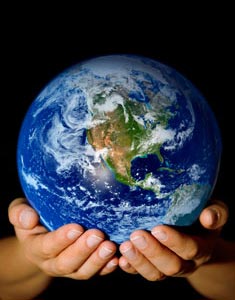Solstice - A Universe Birthday
This is the solstice, the still point of the Sun . . .
where the past lets go of and becomes the future; the place of caught breath.
— Margaret Atwood
The Canadian poet and novelist kicks off the site of the Deep Time Network, a place that celebrates the larger creation story than the one usually told in European traditions and the countries that emerged from it. The Christmas ritual relates to it in terms of timing.
As the Network site notes,
“From time immemorial, humans have honored the winter and summer solstices, as sacred and rich times, to align our personal and collective lives with the movement of celestial bodies. Some of us are heading into the darkness of winter while others are headed into summer and longer days. Wherever you are, the solstice is a planetary event.”
A solstice occurs when the Sun reaches its most northerly or southerly excursion relative to the equator. Two solstices occur annually, around June 21 and December 21.
The term solstice can also be used in a broader sense, as the day when this event occurs. The day of a solstice in both hemispheres has either the most sunlight of the year (summer solstice) or the least sunlight of the year (winter solstice) for any place other than the Equator, where the days and nights are equal in length all through the year.
The word solstice is derived from the Latin sol (“sun”) and sistere (“to stand still”), because at the solstices, the Sun appears to “stand still”; that is, the seasonal movement of the Sun’s daily path (as seen from Earth) pauses at a northern or southern limit before reversing direction.
And this year there is an added bonus, if you are in a location with a clear night. There are likely to be meteor showers but there is also the best chance in 400 years to see two planets, Jupiter and Saturn, appear closer than usual – not that they are actually close to us. Saturn is 1.6 billion km. from earth, while Jupiter is about 885 million away. They appear to meet in the night sky. The last time this happened so visibly was in 1623. Binoculars may make it visible in the south west sky just around sun down. Through right now, and for the rest of December, they will appear to be super-close in the post-sunset night sky.
And though it’s a shorter interval, the great Cathedral of St. John the Divine in New York City has celebrated the solstice for the past 41 years with a performance by the famed Paul Winter consort. I sang in the chorus when they came to Toronto for a performance of the Missa Gaia in 1989 and it still happened again this year at the Cathedral. NPR offers a reprise of the 2019 concert and you can listen and watch excerpts of it here..

